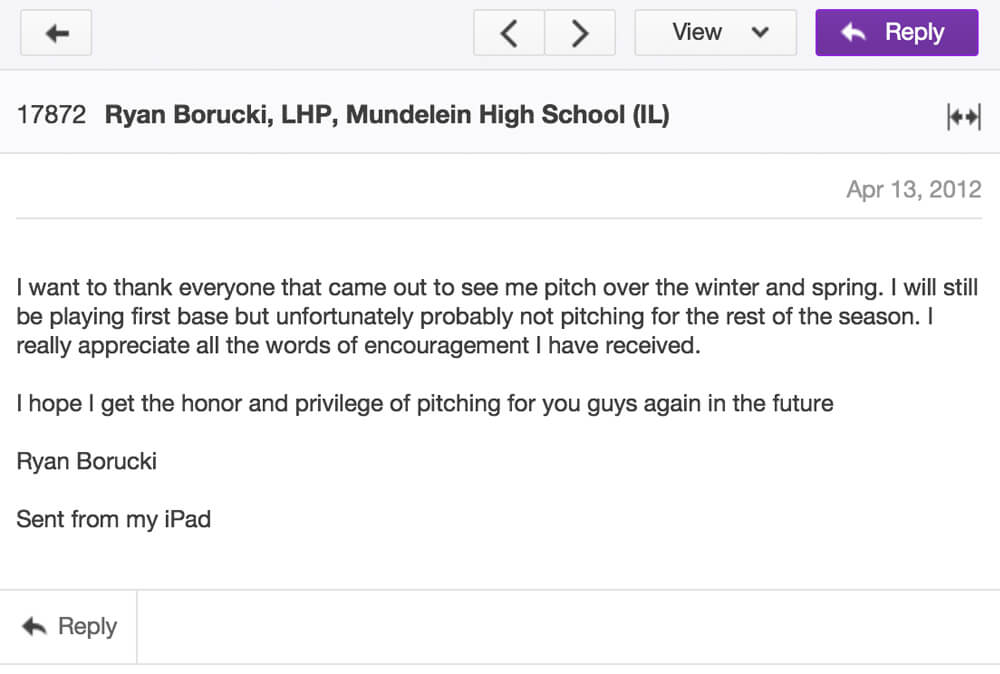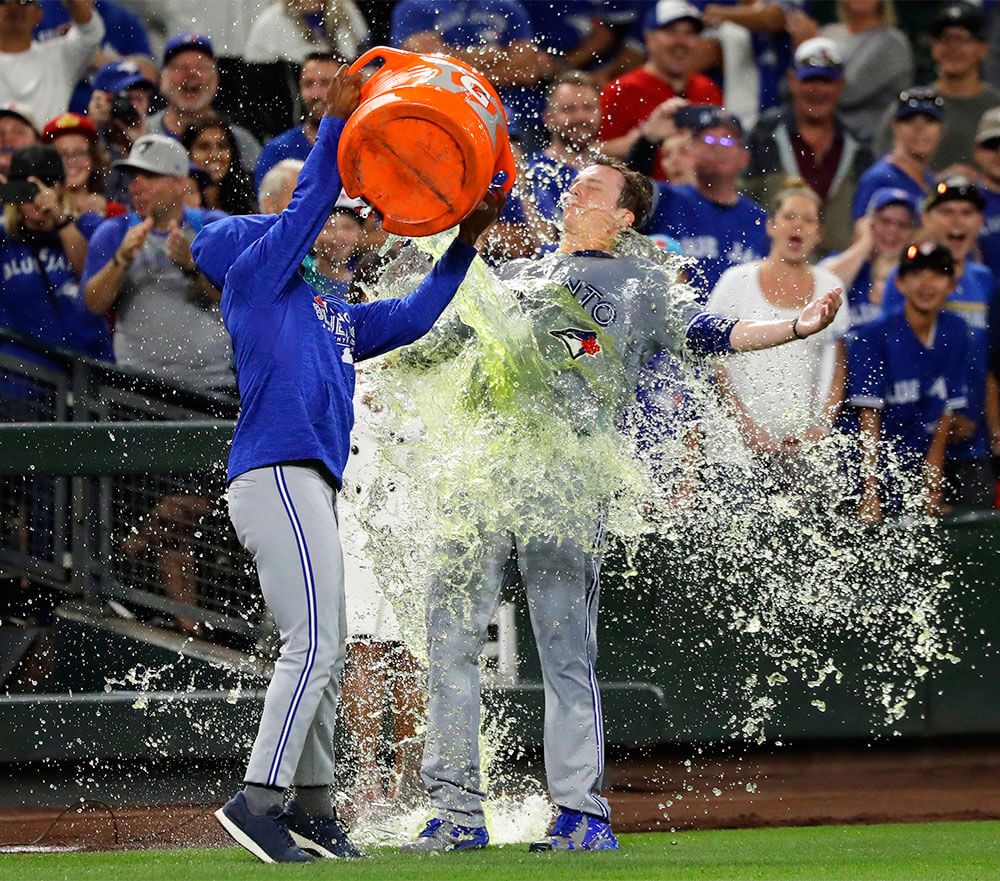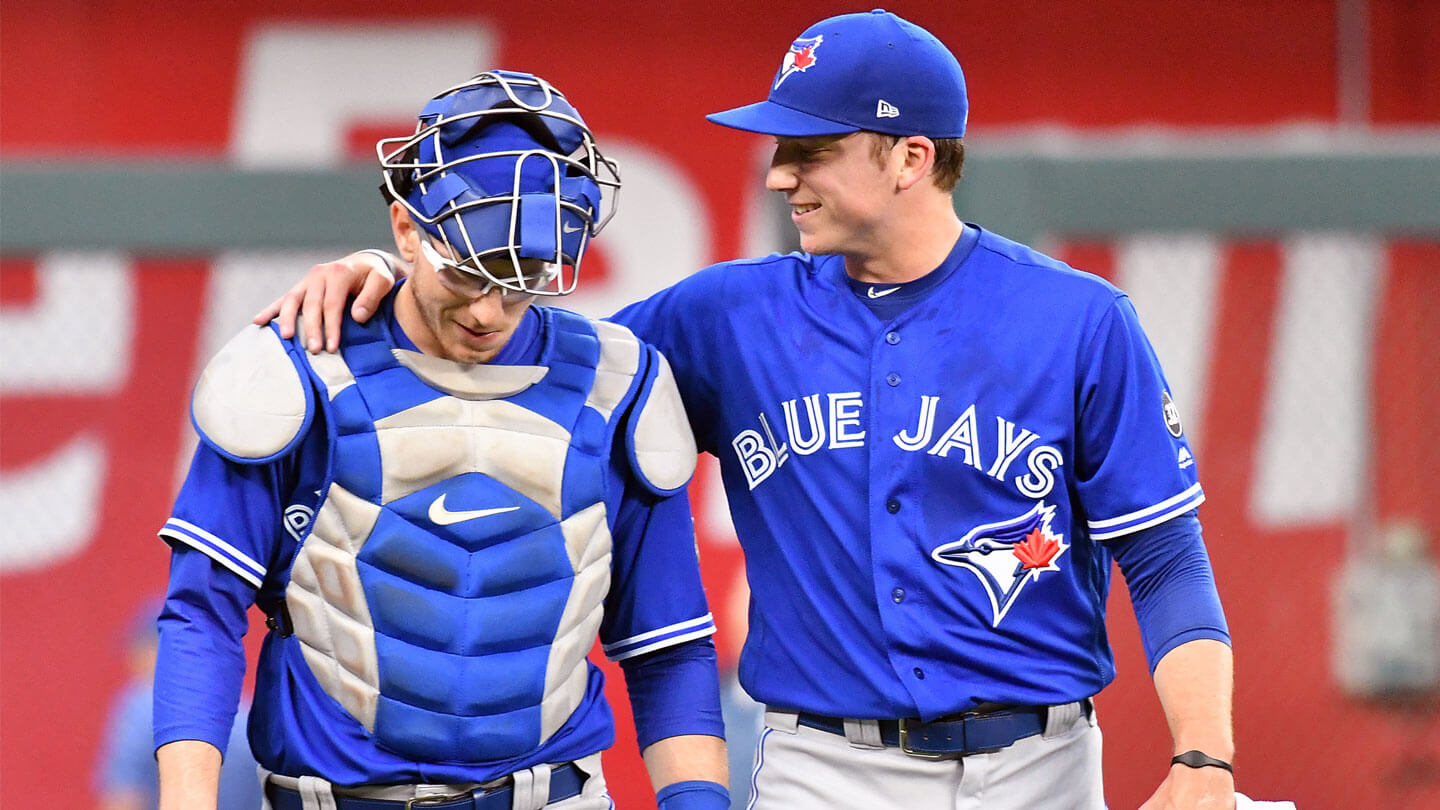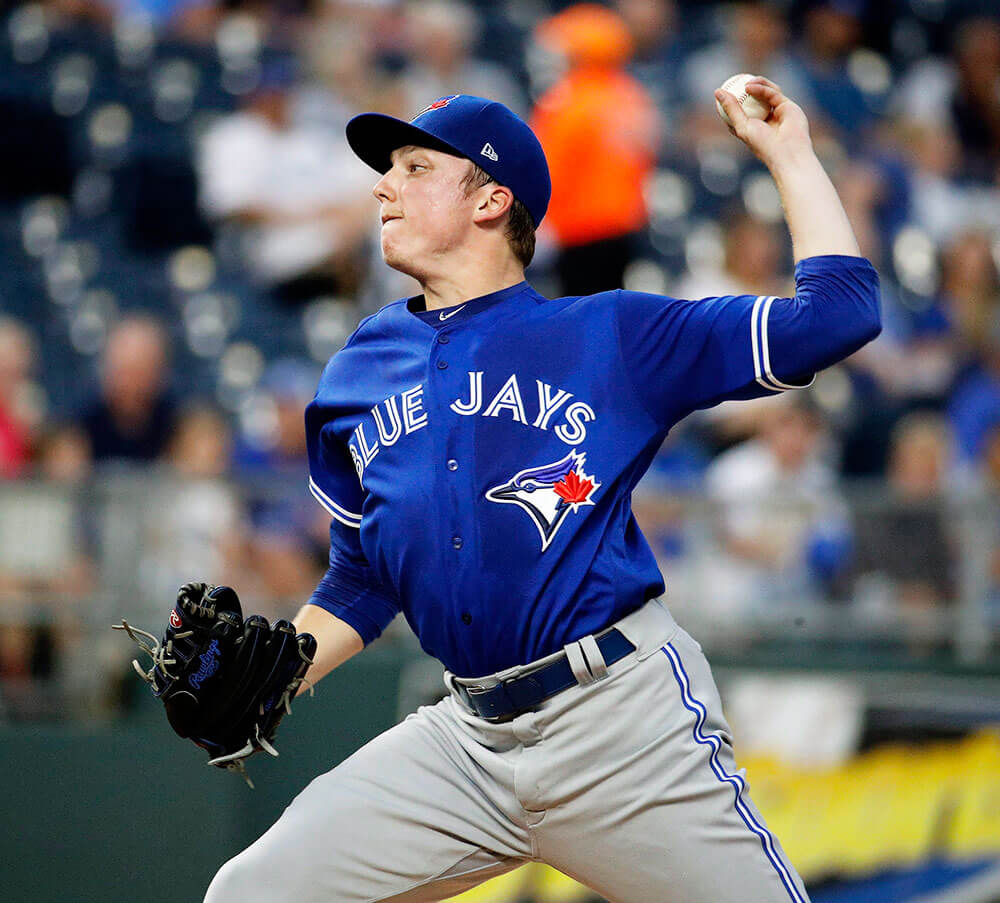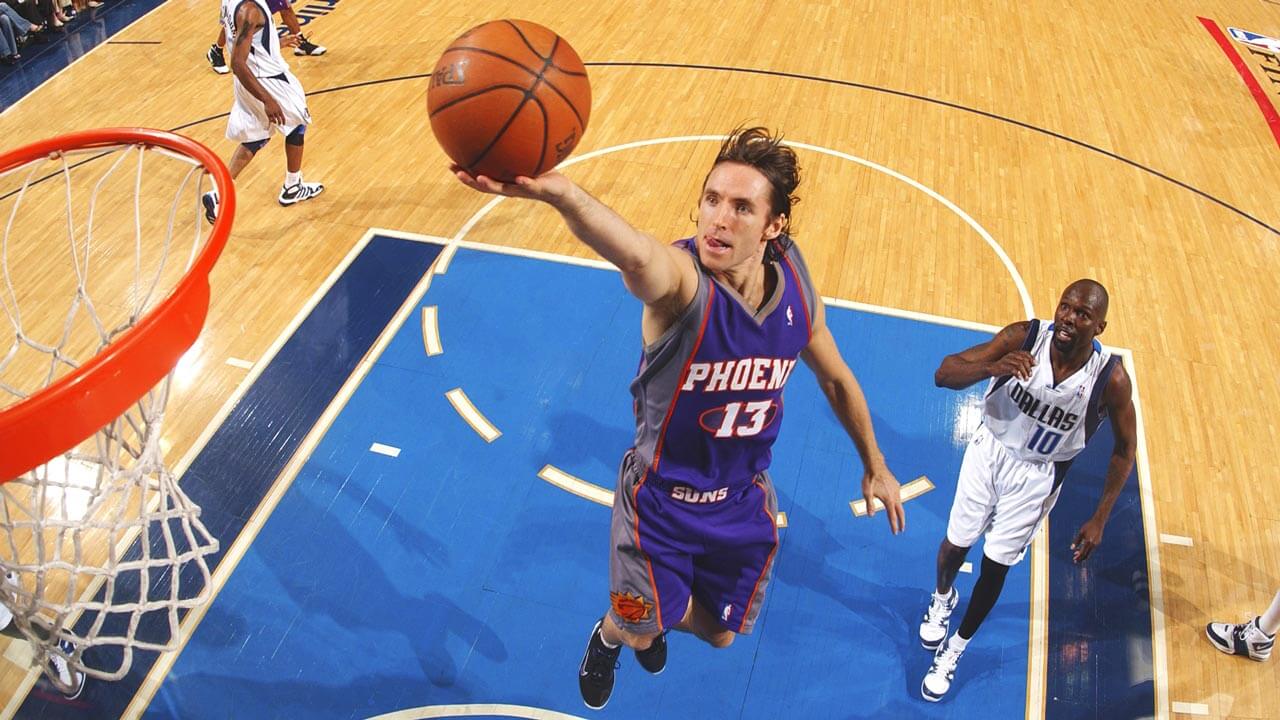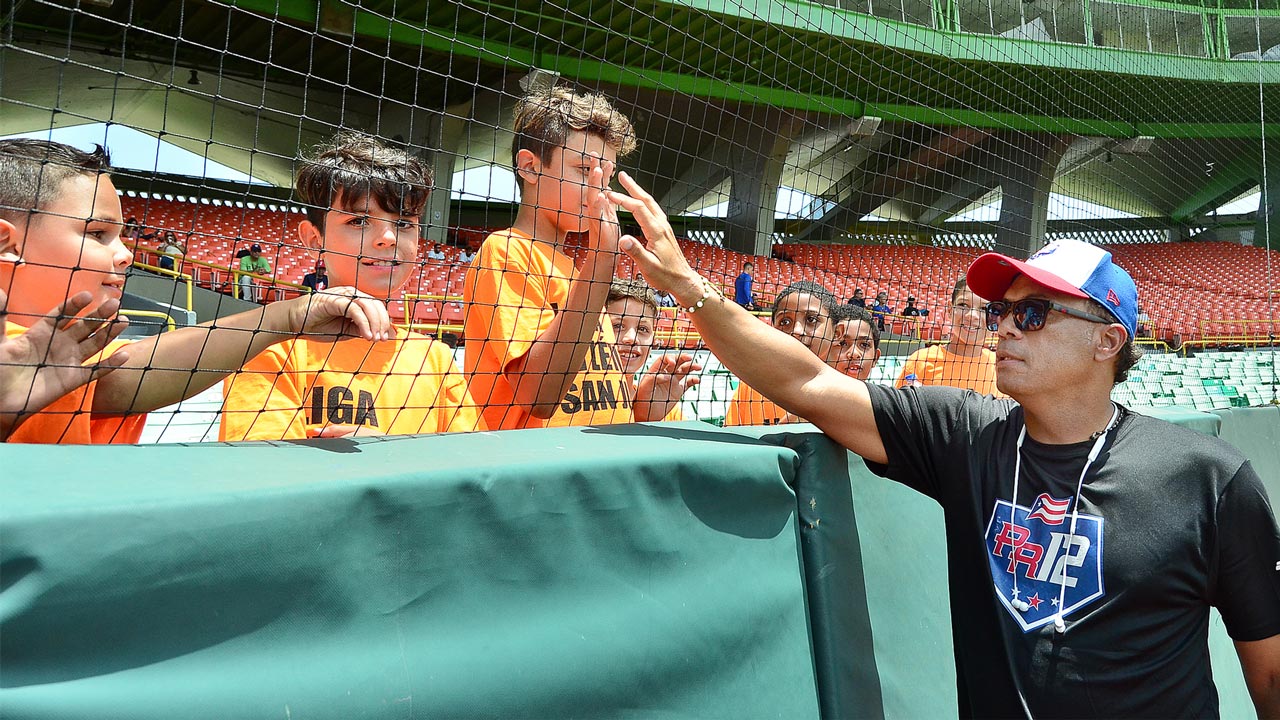At first, Borucki didn’t take well to the feedback. Suspicious of a coach trying to change him, especially coming off a good season, he butted heads with Riggins. “I thought I had it all figured out, and I was like, ‘Just leave me alone,’” he explains.
Riggins kept at him, though. During games, watching video, he’d point to different offerings and say “that’s a major-league pitch,” when, say, a low fastball induced a groundball. He’d say “that’s a minor-league pitch,” when an offering stayed in a hittable zone, even if an out was recorded. Eventually, the light bulb turned on for Borucki. “I was like, ‘Man, all he is trying to do is help me,’” he says. “He just really pushed me, like now you can do this better, you can do that better. Nobody really likes hearing the stuff they need to work on. They want to hear, ‘OK, you’re doing really well.’ But once I really bought in, that’s when I really took off. We started to work really well together. I looked forward to throwing sides with him and talking to him every day.”
By mid-July, Borucki was promoted to double-A New Hampshire; a month later, he was at triple-A Buffalo. If the Blue Jays had the innings for him, he would have been a September call-up. Watching a player make such rapid progress is the most satisfying reward for a coach. “Most of the good ones, you do butt heads with them,” says Riggins. “We had man-to-man talks on things that needed to be done and the good ones have ideas about what needs to be done. You don’t just want a ‘Yes’ pitcher who does whatever the coach says. A part of being a good competitor is having your own ideas and analyzing what’s right or what isn’t right.”



